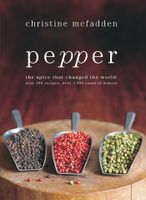Advertisement
Death in the Pot
Appears in
Published 2008
Human nature being what it is, adulteration of a valuable and widely used spice such as pepper was inevitable from the moment it reached European shores. Unscrupulous profiteers devised ingenious methods for padding out its bulk; common adulterants included pepper husks, ground fruit stones, linseed, buckwheat hulls and mustard seeds. Isabella Beeton, 19th-century diva of household management, warns of rice flour in white pepper and burnt toast crumbs in black. And there is evidence of worse.
In 1820, Fredrick Accum, a London-based analytical chemist and influential campaigner for uncontaminated food, wrote

